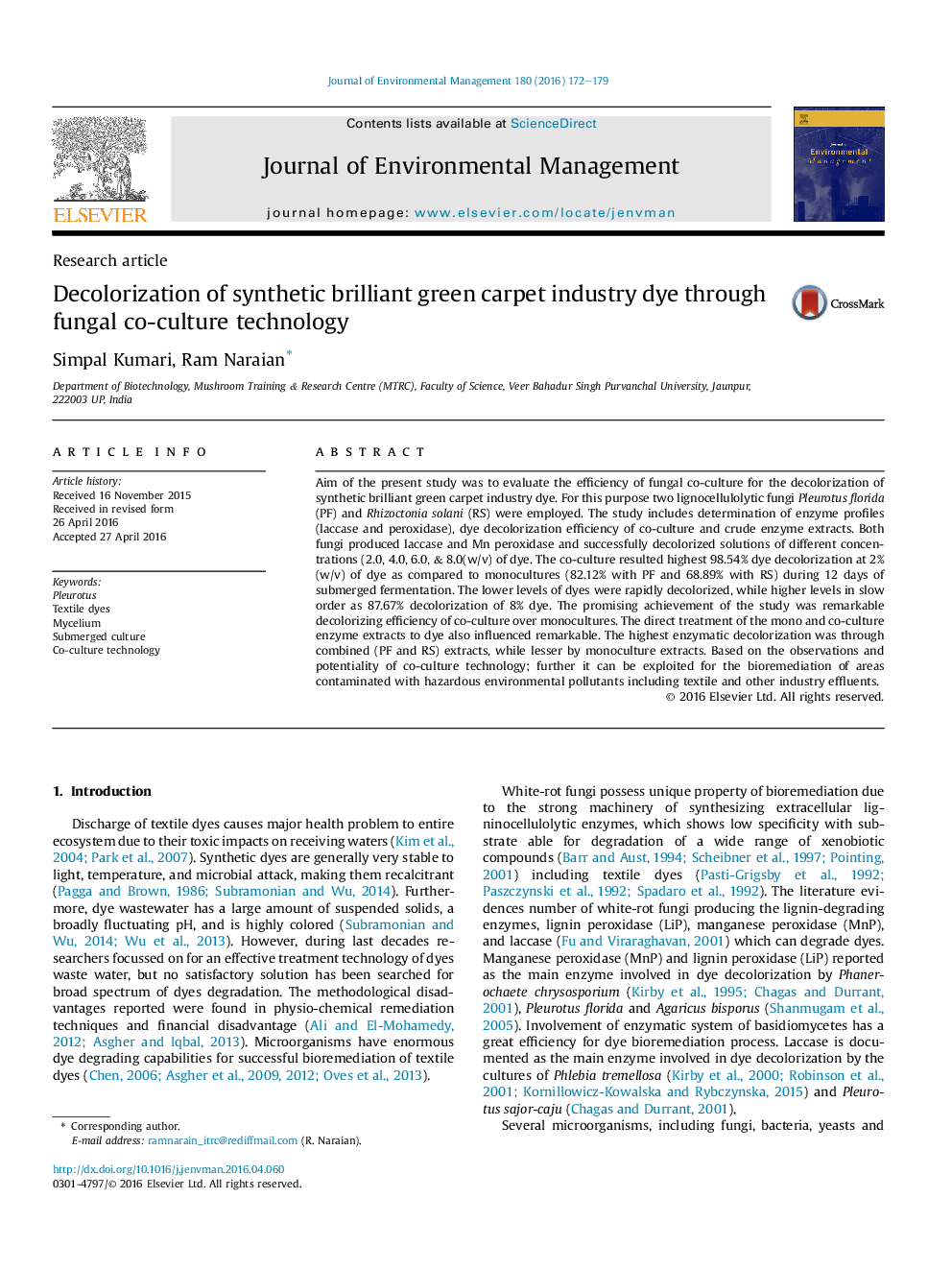| Article ID | Journal | Published Year | Pages | File Type |
|---|---|---|---|---|
| 7479997 | Journal of Environmental Management | 2016 | 8 Pages |
Abstract
Aim of the present study was to evaluate the efficiency of fungal co-culture for the decolorization of synthetic brilliant green carpet industry dye. For this purpose two lignocellulolytic fungi Pleurotus florida (PF) and Rhizoctonia solani (RS) were employed. The study includes determination of enzyme profiles (laccase and peroxidase), dye decolorization efficiency of co-culture and crude enzyme extracts. Both fungi produced laccase and Mn peroxidase and successfully decolorized solutions of different concentrations (2.0, 4.0, 6.0, & 8.0(w/v) of dye. The co-culture resulted highest 98.54% dye decolorization at 2% (w/v) of dye as compared to monocultures (82.12% with PF and 68.89% with RS) during 12 days of submerged fermentation. The lower levels of dyes were rapidly decolorized, while higher levels in slow order as 87.67% decolorization of 8% dye. The promising achievement of the study was remarkable decolorizing efficiency of co-culture over monocultures. The direct treatment of the mono and co-culture enzyme extracts to dye also influenced remarkable. The highest enzymatic decolorization was through combined (PF and RS) extracts, while lesser by monoculture extracts. Based on the observations and potentiality of co-culture technology; further it can be exploited for the bioremediation of areas contaminated with hazardous environmental pollutants including textile and other industry effluents.
Related Topics
Physical Sciences and Engineering
Energy
Renewable Energy, Sustainability and the Environment
Authors
Simpal Kumari, Ram Naraian,
